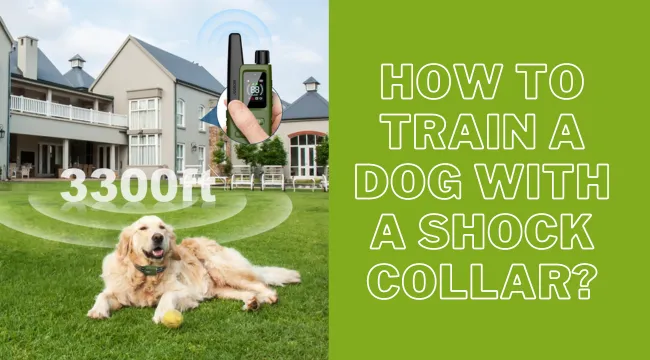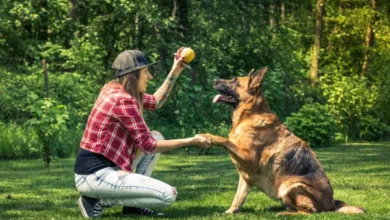
Oh, how much we adore our pooch friends! The fluffy balls of pure love without whom we cannot imagine our lives! But they do not act like cherubs all the time, do they?
You love him to bits and believe he is the most handsome pup around – but he is always barking…taking you (and your neighbors) to your wit’s end. Or perhaps he is always ripping things when he is not sleeping. Do these scenarios sound familiar? Imagine your doggo misbehaving in public. It isn’t just embarrassing, but will also make you look like a negligent owner.
Bad behaviors and aggression are common in dogs but may impact your relationship negatively. Training your dog is an option; however, it may not be the easiest solution. Luckily, there is a range of Dog Training, Containment, and Animal Grooming Products that can help. And a shock collar is one of them.
You’d ask – aren’t dog shock collars frightening and painful?
No; a shock collar for dogs is considered one of the most effective (and humane) ways to keep bad behavior and anger in check – at least when they are used in the right way. Hence, it is crucial to know how to use it in a proper way to train your pooch.
How Does a Dog Shock Collar Work?
Before you start using it, let’s understand the dynamics of shock collars for dogs. Typically, it comes with a remote transmitter and a dog’s collar receiver. The handheld transmitter sends a radio signal to the receiver to activate various stimulations such as static pulse, vibration, or tone. The collar comes with two prongs that touch the dog’s skin to deliver the stimulation in the right way.
The static stimulation produces a tickling sensation, which does not harm or cause pain to your doggo. It is only designed to deter him or her from unwanted or aggressive behavior. To ensure the safety of your fur friend, it is recommended to buy the best-rated dog shock collar that passes the federal standards of using electronic devices.
How to Use a Dog Training Collar?
Worried about using a shock collar to train your pooch? Discussed here are a few ways of using it safely and effectively.
1. Choose the Right Dog Shock Collar
Pick the best dog shock collar that meets your specific training needs and your dog’s weight, nature, character, and breed. Some breeds of dogs are more stubborn and dominant, so the shock collar should be ideal for training them. Make sure it is waterproof or at least, splash-proof. This also depends on the type of dog you have. For instance, you must buy a submersible and waterproof collar for your Labrador friend because of how much they love water.
Shock collars also come with different types of stimulations. For instance, some emit beep sounds, while others deliver vibrations or electronic shocks. The mode of sensation you need will depend on your dog’s character. You should also buy the best long-range dog training collar with a remote, so even if he runs away far, you can still control his behavior. These shock collars can work up to a range of 1.25 miles.
2. Ensure the Collar Fits Perfectly
Before using the collar, it is crucial to ensure that it fits your doggo properly. Here are some guidelines for you:
- Let your pet stand comfortably and ensure the shock collar is not turned on when you are making it wear. Your dog must not be sitting when you fit the collar.
- The collar should provide a snug fit, but make sure it is not too tight. Put one finger between your doggy’s neck and the collar to check the fit.
- Allow him time to wear it and get comfortable.
- Once you are assured of having the perfect fit, you can turn on the dog training shock collar.
Collar conditioning is important, and so is the level of stimulation. Let him wear the shock collar while playing, going out, or during walks – so that he considers it to be like any other collar. Similarly, the stimulation level should be such that your pooch understands and accepts it as a part of training.
3. Show the Positive Behavior You Want from Your Dog
To prevent the shock collar from being an overwhelming experience for your dog, it is crucial that you work with him to show the type of positive behavior you expect. For example, if he barks consistently, you can use a type of sensation in the dog bark shock collar to let him understand that it is not good behavior. On the other hand, you should also try to combine the collar experience with positive reinforcement, such as praising home or giving him his favorite treat if he does not bark.
4. Take it Slow
First and foremost, shock collars should not be used on puppies less than 6 months old. Furthermore, if you think using the collar more frequently and with increasing levels of stimulation will make your pooch learn faster, then you must change your mindset. It may be confusing for him and traumatizing too. It is recommended to start with a low level of stimulation and continue training him better with time.
5. Know How to Use the Collar for Training the Right Way
The best shock collar for dogs typically comes with three types of stimulations – sound, vibration, and electric sensation. If the dog refuses to behave or does not respond to your call, you can use the sound mode to warn him. If the behavior or aggression continues, you can use the vibration stimulation as a second warning. If he still refuses, you can use a low level of electric shock to train him. The training should be adapted based on your dog’s breed and character.
Conclusion
Despite all the controversies, using a shock collar to train a dog is considered highly effective when done in the right way. In addition to mastering the art of using a shock collar, you should also consider buying the right one for your furry friend. You can shop for a high-quality, waterproof dog shock collar online.



